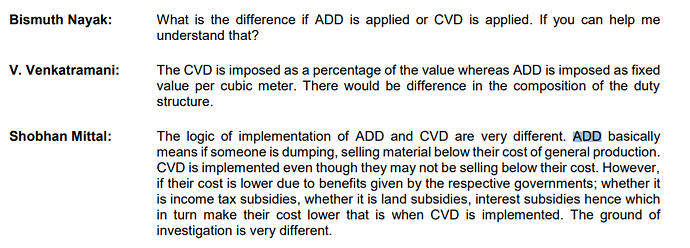One of the levers the management has handy to improve margins is to change the domestic to export mix in favor of domestic within the MDF business. Per CBM realization in domestic market has historically trended at 21,000+ while realization in export market is closer to 15,000.
The other lever is changing the channel to OEM sales mix, the focus over the past 2 years was to sweat assets in whatever way possible since low utilization was denting both P&L and balance sheet. Now that they have the utilization at a very healthy level, the next logical step is product mix changes to squeeze out better realizations, higher margins and in the process deleverage the balance sheet.
The entire MDF market in India was around 1900 Cr before COVID, we currently have a situation where Greenpanel Ind alone is able to do 1200 Cr annual revenue in MDF. Action Tesa and Century MDF too have improved capacity utilization over the past couple of Q’s, what appears to be under rated right now is the possibility that the domestic MDF market is growing at a healthy rate. As the supply glut of the past 2 years has waned, realizations are expected to go up for all the players.
The biggest risk here continues to be the 400+ Cr of debt with most of it being non unhedged non INR debt which can spike finance charges if the INR were to go into depreciation mode suddenly. A good part of the balance sheet risk will get addressed if they can bring down debt by another 150 Cr over the next 12 months or so.
Overall the strong business performance has surprised even the management, the situation was looking very grim when COVID hit in March 2020. Within one year we are at a situation where everything has improved by leaps and bounds, no wonder the stock price is up 9x+ from the March 2020 lows.
Biggest learnings from this story -
Respect replacement values, the story was trading at 500 Cr when the replacement value of the assets was 1200+ Cr
A few positive possibilities playing out in unison can get such stories out of the trenches within 1 year (though you cannot predict these things precisely, you can anticipate some of them)
Respect businesses that have the best technology, market leadership and a few competitive advantages
A business that can deliver EBITDA margin of 20%+ and grow at 15% during normal times cannot be a low quality business, no matter what the market opinion is
Promoters who have a decent track record of value creation for minority shareholders manage to pull through most of the time (Plywood+laminate+MDF was trading at CMP of 300 in 2014, there on both Greenply and Greenlam made multibagger return for investors before they embarked on the ambitious MDF capex)
Obsessively track supply in market segments that are small. If one had tracked this and acted accordingly one could have avoided a good chunk of the steep fall in stock price from 380 to 120 for the combined Greenply + Greenpanel business in 2018. From there the price is up almost 4x in a matter of 18 months (adding up price of Greenply and Greenpanel)
As of date the business appears to pricing in good prospects over the next few Q’s, it is no longer a question of thinking positive possibilities but one needs to be risk focused as well. Also time to evaluate if there are better opportunities within the building materials segment post the steep stock price run up over the past 12 months.
Disclosure: Invested, SELL transactions over the past month or so. I am a SEBI registered IA






